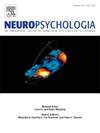The cortical representation of transitivity: Insights from tractography-based inhibitory nTMS
Abstract
Navigated Transcranial Magnetic Stimulation (nTMS) is commonly used to causally identify cortical regions involved in language processing. Combining tractography with nTMS has been shown to increase induced error rates by targeting stimulation of cortical terminations of white matter fibers. According to functional Magnetic Resonance Imaging (fMRI) data, bilateral cortical areas connected by the arcuate fasciculus (AF) have been implicated in the processing of transitive compared to unergative verbs. To test this connection between transitivity and bilateral perisylvian regions, we administered a tractography-based inhibitory nTMS protocol during action naming of finite transitive (The man reads) and unergative (The man sails) verbs. After tracking the left and right AF, we stimulated the cortical terminations of the tract in frontal, parietal and temporal regions in 20 neurologically healthy native speakers of German. Results revealed that nTMS induced more errors during transitive compared to unergative verb naming when stimulating the left (vs right) AF terminations. This effect was specific to the left temporal terminations of the AF, whereas no differences between the two verb types were identified when stimulating inferior parietal and frontal AF terminations. Induced errors for transitive verbs over left temporal terminations mostly manifested as access errors (i.e., hesitations). Given the inhibitory nature of our nTMS protocol, these results suggest that temporal regions of the left hemisphere play a crucial role in argument structure processing. Our findings align with previous data on the role of left posterior temporal regions in language processing and by providing further evidence from a language production experiment using tractography-based inhibitory nTMS.

 求助内容:
求助内容: 应助结果提醒方式:
应助结果提醒方式:


